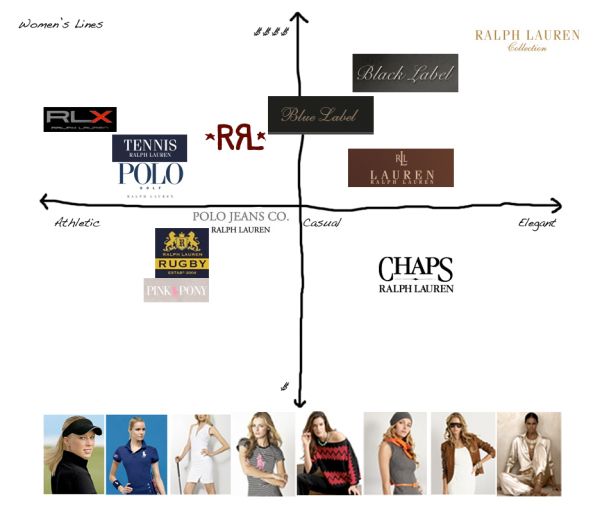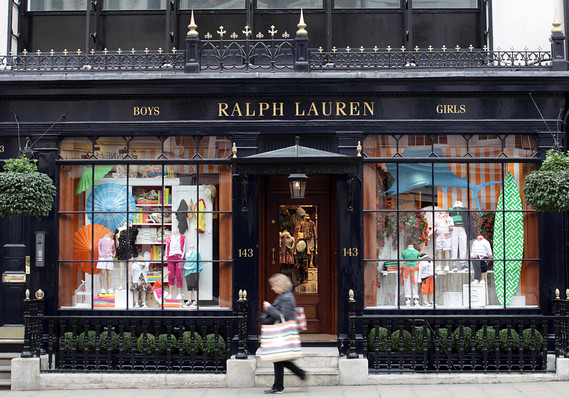Ralph Lauren Corporation is a publicly listed American fashion corporation created in 1967 by fashion designer Ralph Lauren. The corporation is located in New York City and manufactures items ranging from mid-range to premium. Ralph Lauren Corporation is a global leader in the design, marketing, and distribution of high-end lifestyle items in five categories: clothes, accessories, home, perfumes, and hospitality.
Ralph Lauren’s reputation and distinctive image have been steadily cultivated over more than 50 years across a growing number of goods, brands, and foreign markets. The Company’s brand names, which include Ralph Lauren Collection, Ralph Lauren Purple Label, Polo Ralph Lauren, Double RL, Lauren Ralph Lauren, Polo Ralph Lauren Children, and Chaps, are among the most well-known in the world. Among luxury and clothing firms, the company’s worldwide reach, range of product offerings, and multichannel distribution are unrivalled.

History of Ralph Lauren
Ralph Lauren, Calvin Klein, and Robert Denning were among numerous design innovators raised in the Bronx’s Jewish neighbourhood.
Lauren founded The Ralph Lauren Corporation in 1967, beginning with men’s ties. Lauren was 28 years old when he started working for the tie maker Beau Brummell. He convinced the company’s president to allow him to launch his own line. Lauren called his first full line of menswear “Polo” in 1968, based on his sporting interests. He worked out of a single “drawer” in an Empire State Building display and made his own deliveries to retailers.
Lauren’s men’s collection was solely offered in the Manhattan department store Bloomingdale’s by 1969. Bloomingdale’s has granted a designer his own in-store shop for the first time. Ralph Lauren Corporation created a line of fitted shirts for ladies in 1971, which included the Polo player logo on the shirt cuff. The next year, the first comprehensive women’s collection was released.
Ralph Lauren’s first freestanding store opened on Rodeo Drive in Beverly Hills, California, in 1972. Lauren introduced a short-sleeve cotton shirt in 24 colours in 1972. This style, imprinted with the company’s famous logo—a polo player designed by tennis great René Lacoste—became the brand’s defining appearance. Ralph Lauren Corporation debuted a distinctive cotton mesh polo shirt in a variety of colours in 1977, with the polo player emblem on the breast.
The first Ralph Lauren perfumes, created by Warner-Lauren, Ltd, were introduced at Bloomingdale’s in 1978. Lauren is a women’s fragrance, and Polo is a men’s cologne. This was the first time a designer released two perfumes — one for men and one for ladies – at the same time.
With the establishment of the first freestanding store in New Bond Street in London’s West End in 1981, the company entered the European market and became globally. At 1986, Lauren launched his first store in the Rhinelander house on Madison Avenue and 72nd Street in New York City. The firm becomes a publicly listed company on the New York Stock Exchange on June 12, 1997.
The 98-seat RL restaurant debuted in March 1999 in Chicago, close to the company’s largest and world flagship Ralph Lauren shop on the Magnificent Mile, near the intersection of Chicago and Michigan Avenues. It was followed by the establishment of two more restaurants, Ralph’s at 173 Boulevard Saint Germain Paris in 2010 and The Polo Bar at Polo’s New York shop in 2015.
RL Media established polo.com, the company’s website and online store, in 2000. (a cooperation between Ralph Lauren and NBC). Ralph Lauren Corporation purchased NBC’s stake in RL Media in 2007, and the website was renamed ralphlauren.com. In September 2015, it was announced that Stefan Larsson will succeed Ralph Lauren as CEO in November. Lauren retained his position as executive chairman and chief creative officer. In February 2017 it was announced that Larsson had agreed to leave his position as CEO effective May 1, 2017, due to differences with Lauren.
Ralph Lauren Corporation announced in May 2021 that it will sell its Club Monaco brand to private equity firm Regent LP.
At the forefront of affairs is innovation.
Beginning with a broad tie that changed the fashion world, Ralph Lauren has established a 50-year history by taking chances and constantly reaching beyond what is in vogue. Most brands are ageless at their heart, and most customers understand that the company is not merely clothing them for the season – they are serving them for their lives and lifestyles.
With this unwavering spirit of creativity, the company strives to dream big when it comes to its designs and how it brings the World of Ralph Lauren to life. Every fresh design and every new dream is an opportunity to pioneer new methods to manufacture more responsibly, accelerate its commitments to sustainability, and provide customers with an upgraded and more seamless connected retail experience.
Color on demand
Color on Demand is a game-changing dying platform that is transforming the way the fashion industry dyes cotton – more responsibly, efficiently, and quickly than ever before.
Color on Demand is a multi-phased system designed to assist address water shortages and pollution caused by cotton dyeing. Its stated aim is to offer the world’s first scalable zero effluent cotton dyeing system, allowing the recycling and reuse of all dyeing process water.
The Earth Polo
The Earth Polo, a reimagining of the traditional Polo shirt, is made with thread generated completely from recycled plastic bottles and coloured in an innovative method that needs no water. Each Earth Polo is created from an average of 12 plastic bottles, and it is the beginning of our pledge to remove 170 million plastic bottles from landfills and seas by 2025 — bottles that will be transformed into high-quality thread.
The Earth Polo was created in collaboration with First Mile, a worldwide organisation dedicated to sustainability and good social effect. First Mile partners with businesses in low-income neighbourhoods to collect recyclable plastic bottles, which are then processed via a unique and environmentally friendly manufacturing method and transformed into high-quality yarn and, eventually, fabric.
The virtual shop experiences, which would be available from 2020, allows customers to immerse themselves in the world of Ralph Lauren’s renowned flagship stores throughout the world, from New York and Beverly Hills to Paris and Hong Kong.
The virtual store experience offers the newest collections, as well as antique and vintage products, all shoppable from the comfort of your own home, with the same degree of attention to detail and care that has come to characterise Ralph Lauren’s in-person shopping trips. Private shopping appointments with in-store brand professionals are also accessible online, either virtually or in person, for style consultations, purchasing guidance, or a personal walk-through of the World of Ralph Lauren’s current collections.
Take a virtual tour of our iconic stores: RL Virtual Experience
Brand Strategies of Ralph Lauren
Brand Strategy
Ralph Lauren’s (RL) advertising initiatives are developed and implemented by the company’s in-house creative and advertising team. The organisation guarantees uniformity of presentation across channels and regions in this manner.
Print is the company’s principal advertising medium. Its advertising may be found in fashion, lifestyle, and general interest magazines on a regular basis. Furthermore, the firm promotes its products via television, direct-to-consumer marketing, and special events. Digital and social media marketing initiatives are becoming increasingly important.
RL increases brand awareness by participating in renowned fashion events like as New York Fashion Week and Milan Fashion Week. Currently, the business is the official outfitter for all on-court officials at both the Wimbledon and US Open tennis events. It also serves as the official parade outfitter for the United States Olympic and Paralympic Teams.
Also Read: Superdry – Epitome Of Fusion Fashion
Digital Customer Experience
Ralph Lauren’s Marketing Campaigns
How has Ralph Lauren remained at the forefront of the fast-paced fashion industry? In part, by using modern technologies into its marketing initiatives.
1. Created a 4D Holographic Fashion Show
Ralph Lauren staged its virtual fashion presentation in Central Park’s Cherry Hill, rather than on a traditional runway. A 4D holographic display was projected onto a big water screen for viewers to enjoy.
In under 10 minutes, the virtual exhibition made models appear to stroll on top of the water in several locations—The High Line, The Brooklyn Bridge, and the West Village.
2. Created fitting rooms that merged digital technology and in-store retail
Ralph Lauren partnered with Oak Labs’, a retail technology platform, to build smart-mirror fitting rooms in its locations.
The smart mirror seems to be a standard full-length mirror at first glance. When an item is brought into the fitting room, its RFID tag is recognised and the item appears on the screen. Shoppers may then utilise the smart mirror to examine product details, request more colours and sizes, speak with salespeople, and get product suggestions.
The mirrors also allow the business to collect useful information such as conversion rate per item, time spent in the fitting room, and conversion rate per visit.
3. Used interactive shop windows to interact with passers-by
Ralph Lauren installed interactive shop displays in front of its businesses to connect with passers-by on the street. Each screen displayed photos of the company’s ties, chinos, polo shirts, and oxford shirts. Users may personalise, mix-and-match goods, and choose from 18 hues after tapping these photos.
4. Ralph Lauren understands the importance of email marketing.
Ralph Lauren recognises that customers do not buy products just because they see them. They still require a little prodding. As a result, the company develops efficient email marketing campaigns to emphasise the benefits of its products, provide promotions and discounts, and remarket products.
To read more content like this, subscribe to our newsletter
Go to the full page to view and submit the form.

